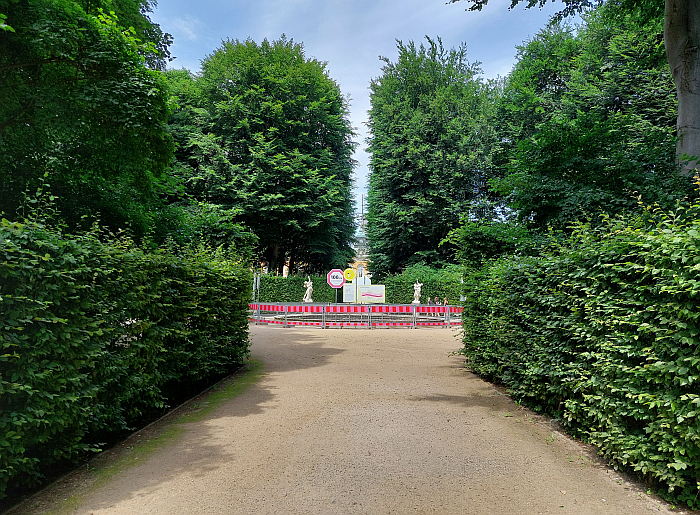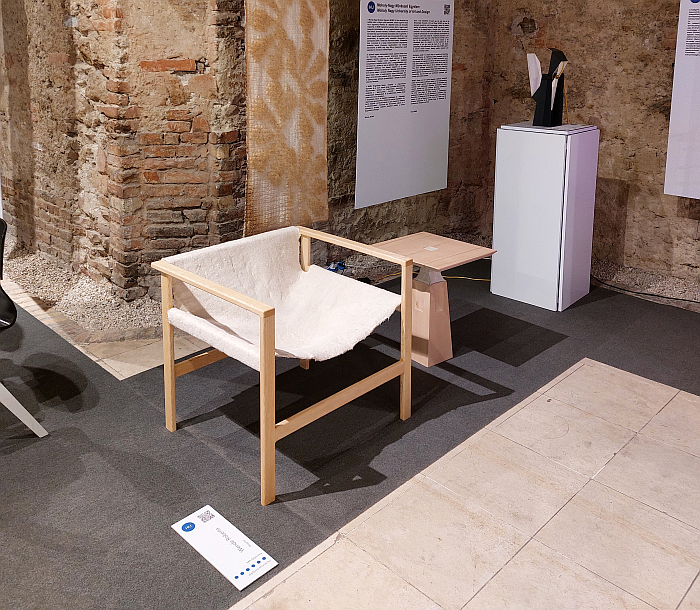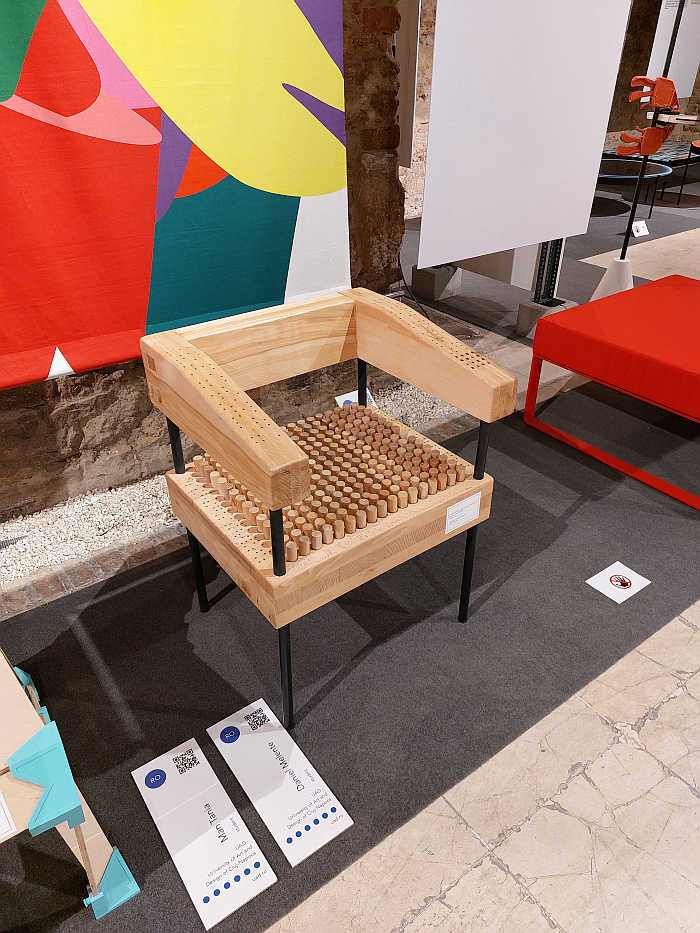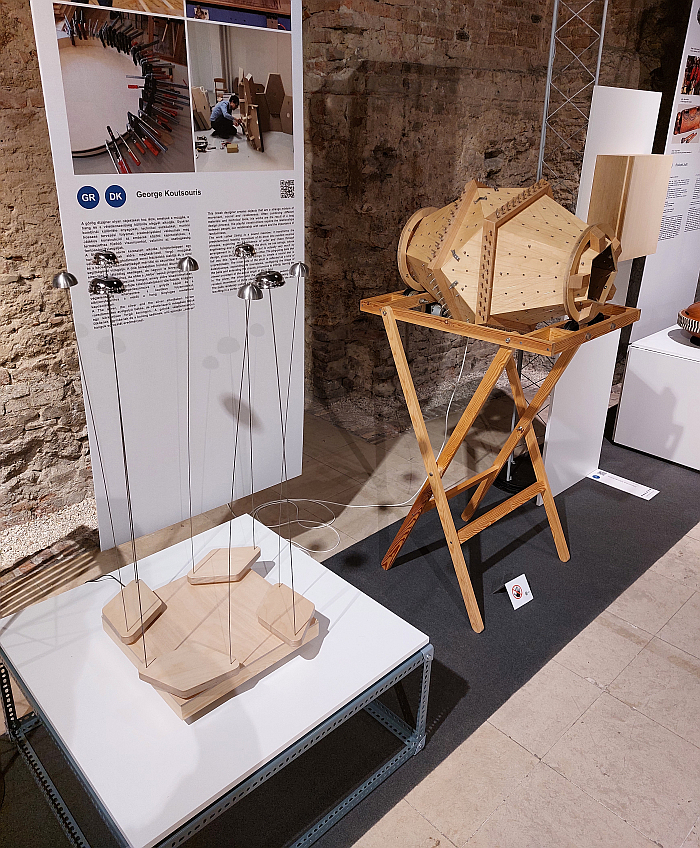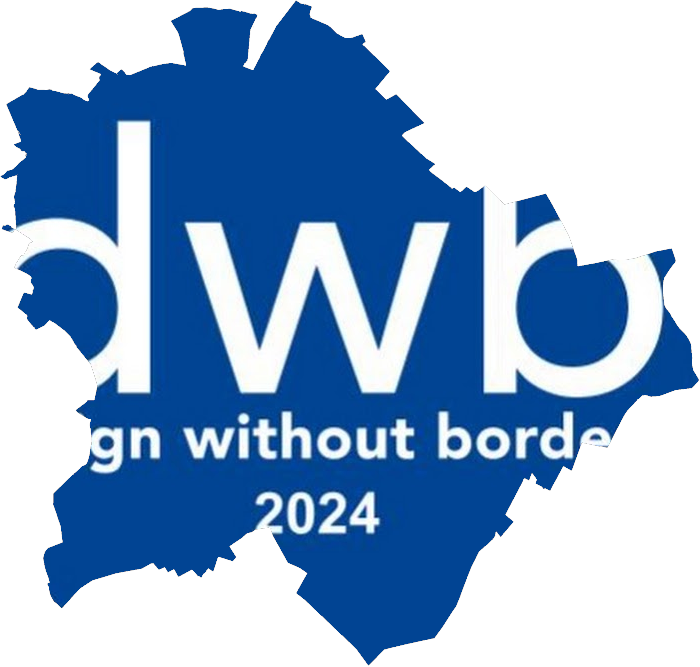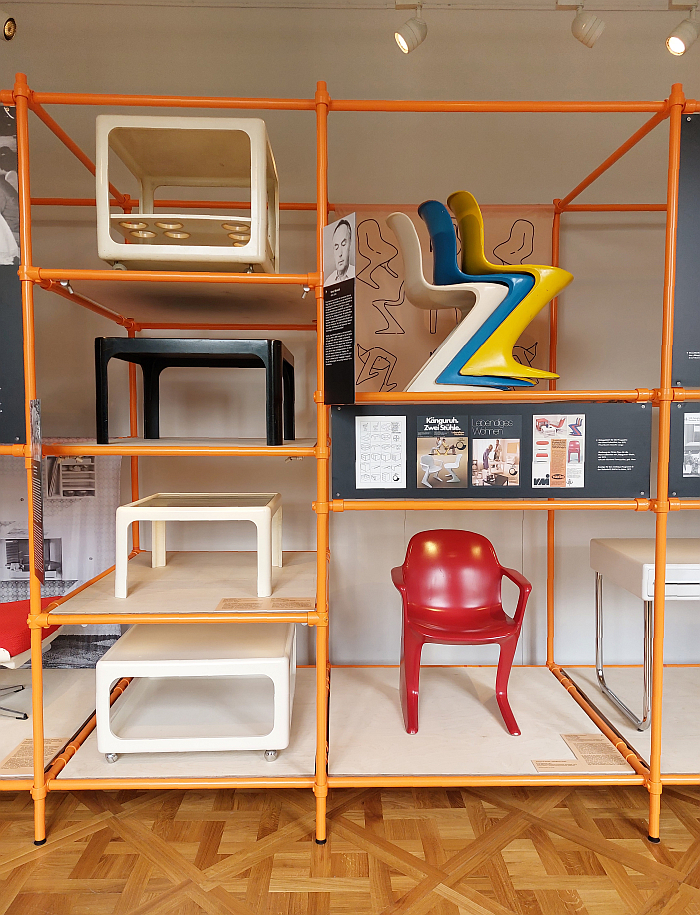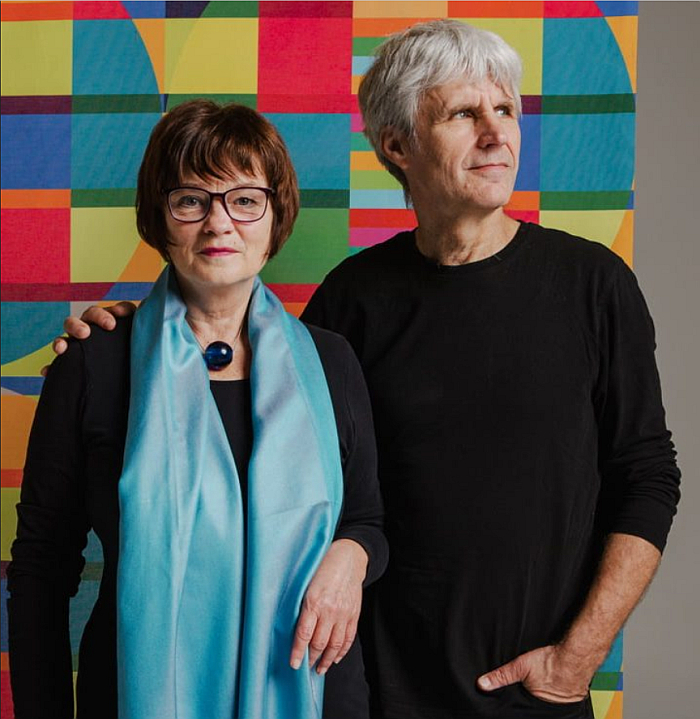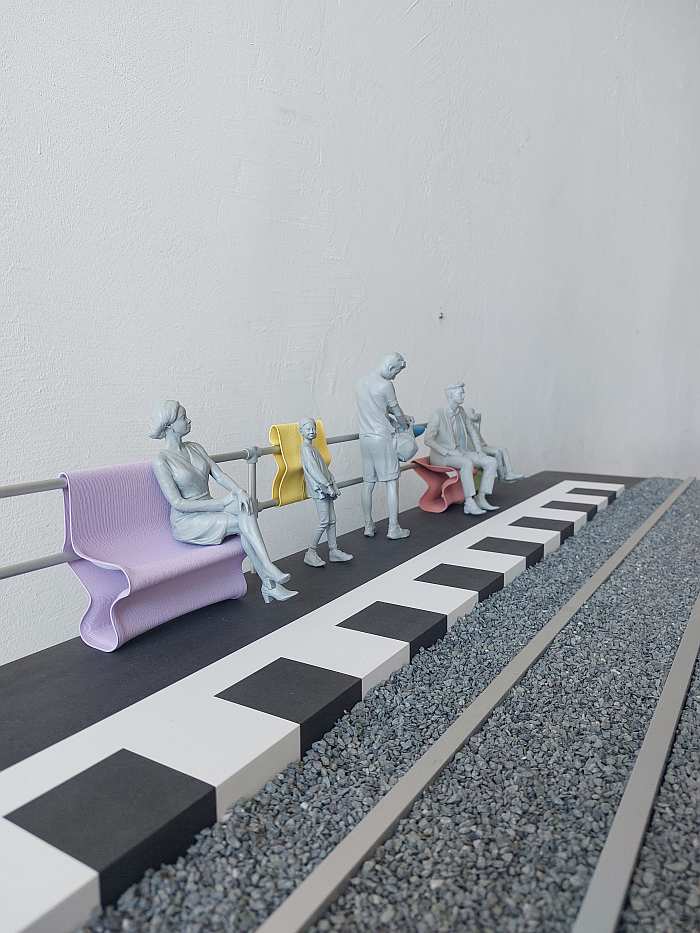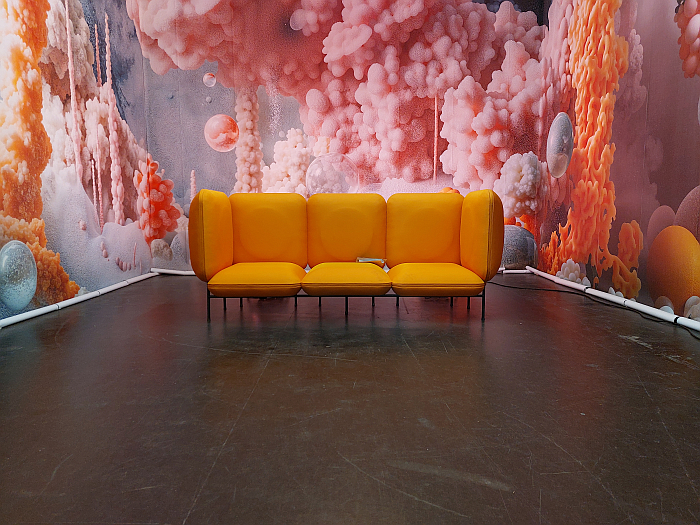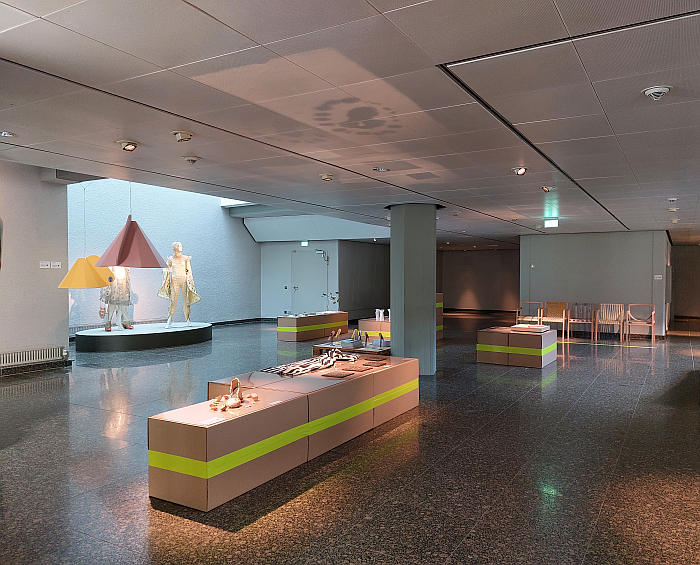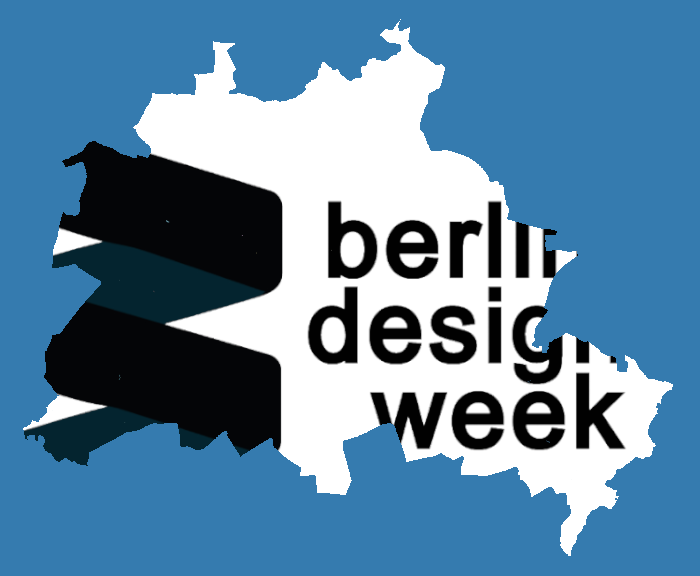Category: Exhibitions and Shows
Lucia Moholy: Exposures at Kunsthalle Praha
“The word ‘document’ which in the last few generations stood, and in many regards still stands for, papers relating to legal matters, such as deeds, contracts, affidavits and certificates, has in present-day professional usage reverted to its original meaning as derived from its Latin origin”, opined Lucia Moholy in 1948, “and now applies to spoken, written, printed and other materials, produced and distributed for the purpose of imparting knowledge”.1
With Lucia Moholy: Exposures Kunsthalle Praha allow one to approach a better understanding that for Lucia Moholy the most important “other material” of documentation was photography, and employs Lucia Moholy’s photography, and her spoken, written and printed material, to enable an imparting of enhanced knowledge of Lucia Moholy and on the (hi)story of 20th century creativity…….
Grassimesse 2024: Meet the selected exhibitors…….
While the rest of the international design museum community retreat from the warmth of the summer sun, taking shelter in the cool of their depots and archives, Leipzig’s Grassi Museum für Angewandte Kunst are busy preparing for one of its annual highlights: Grassimesse. A craft, applied art and design fair instigated in 1920 which has witnessed, and survived, the highs and lows of the past century in Leipzig and environs. And which since 1920 has been by invitation only: anyone and everyone can apply, but only those who can convince the international jury of the quality of their work, the conceptual quality, the material quality, the technical quality, et al of their work, are granted access to the institution.
That first Grassimesse jury was populated by the likes of, for example, and amongst many others, Peter Behrens, Walter Gropius, Gerhard Marcks, Josef Hoffmann, Bruno Paul or Richard Riemerschmid1, the 2024 jury featuring in addition to Olaf Thormann, Director of the Grassi Museum and Sabine Epple, Curator of the Museum’s Modern Collection, and since 2000 responsible for the Grassimesse, the likes of, Christianne Weber-Stoeber, the former director of the Deutsches Goldschmiedehaus, Hanau, Chantal Prod’Hom, the former director of the Musée de Design et D’Arts Appliqués Contemporains, mudac, Lausanne, or Toni Piskac, the former Head of Workplace Consulting & Space Planning at Vitra and who now runs the interior architecture practice studio tnpx.
A 2024 Grassimesse jury who recently convened, a 2024 Grassimesse jury who have now passed judgement……
Re:Generation. Climate change in a natural World Heritage Site – and what we can do about it at Park Sanssouci, Potsdam
As an (apparent) unending forest criss-crossed by visual axes and dotted with meadows, Park Sanssouci in Potsdam stands proxy for the garden design, the garden architecture, of 18th and 19th century Europe.
As an (apparent) unending forest criss-crossed by visual axes and dotted with meadows, Park Sanssouci in Potsdam stands proxy for the power and wealth and pomp and glory of 18th and 19th century Prussia.
According to the Stiftung Preußische Schlösser und Gärten Berlin-Brandenburg, who today are responsible for maintaining and managing Park Sanssouci, some 80% of Park Sanssouci’s trees are damaged, ill.
As an (apparent) unending forest criss-crossed by visual axes and dotted with meadows, Park Sanssouci in Potsdam stands proxy for the consequences and effects of climate change.
A reality employed in Re:Generation to, as the full title helpfully explains, discuss those effects – and the what we can do about it…….
5 New Architecture & Design Exhibitions for July 2024
As Sara Coleridge so very, very, nearly phrased it:
“Hot July brings cooling showers,
Apricots, and inspiring days in architecture and design museums”1
Our five apricots recommendations for inspiring new exhibitions opening in the, invariably, far, far, too hot July of 2024 take us all to Luxembourg, Remagen, Warsaw, Utrecht and Susch…….
Nils Holger Moormann presents Salone di Aschau 2024
Ciao Salone!
Servus Salone!!
Amongst the European designer furniture publishers Nils Holger Moormann has long stood out from the crowd, and that primarily because Nils Holger Moormann has never sought the crowd, has always done Nils Holger Moormann’s thing, not the crowd’s thing, and who in doing such has very much, and very justifiably, attracted a crowd lot of individuals.
Thus while other furniture publishers dance to the tune of the international trade fair crowd, Nils Holger Moormann organise their own trade fair.
Ciao Milano!
Servus Aschau!!
Natalia Romik. Hideouts. Architecture of Survival at the Jewish Museum, Frankfurt
“There is terror and panic in our city”, wrote the, then, 14 year old Clara Schwarz of life in, then, Żółkiew, Poland, today, Zhovkva, Ukraine, in the summer of 1942 of life under German occupation, “the Jews are building bunkers of all kinds: underground, double walls, anywhere they can find a spot to hide”.1
For Clara and her family that “spot” was a “3 metres square and a meter and a half deep” bunker under a house, a bunker dug out by Clara and other children with their bare hands; a “spot” that saved 10 people from murder and/or deportation in the Gestapo raid of November 1942. And which was subsequently expanded to a “10- by 14- metre” bunker which saved 18 individuals from being interned in the new Żółkiew Ghetto in December 1942. A bunker, a “dank, unsanitary place”, under a house, in which Clara her family and neighbours lived for 18 months.
And just one of thousands of hideouts used by Jews across Europe in the 1930s and 40s; thousands for which nine stand proxy in Natalia Romik. Hideouts. Architecture of Survival at the Jewish Museum, Frankfurt, an exhibition which aside from helping focus attention on the terror, brutality and inhumanity of the NSDAP and standing testimony to those men, women and children forced to endure that terror, brutality and inhumanity, allows for differentiated reflections on both concealment and on the built environment, on the complexity of our relationships with the environments we build…….
Design Without Borders 2024, Saluton!
Celebrating its 20th anniversary edition in 2024 we charted, and discussed, the (hi)story of Design Without Borders in our conversation with the institutions initiators, organisers and curators Szilvia Szigeti and Tamás Radnóti, and so refer you there dear readers for the background. And also refer you to our post from the 2014 edition, the last time we visited Design Without Borders in its native Budapest; a last visit in Budapest not for lack on interest, far from it, but simply on account of pressures of time.
In 2024 we did however manage to make it timeously to the Hungarian capital, and up the hill to the Kiscell Museum, Design Without Borders’ home since 2020, and over the coming days and weeks we will bring you some of our thoughts and reflections on some of those works and projects and positions experienced. Here we will quickly note, and as previously intimated, aside from the usual presentation of works by international designers invited by Szilvia and Tamás, and works by students of international design schools that have become a regular feature, Design Without Borders 2024 opens, if one so will, with a brief retrospective of the past 20 years, including textile designs by Szilvia and a desk by Tamás, the latter a work originally shown at the 1996 exhibition BútoroSOKK – FurnitureSHOCK – at the Budapest Museum of Applied Arts, an exhibition curated by Tamás and which judging by the photo on display in the Kiscell Museum must have been a real SOKK in in late 1990s Budapest, and ends with a retrospective of the last decade of Texhibition, or at least ends with a large part of the Texhibition retrospective, elements are woven, pun very much intended, throughout the main display; a Texhibition platform organised by Szilvia which pairs textile designers with Hungarian textile manufacturers to realise a project with the overall aim of supporting and promoting textile design and the textile design industry in Hungary.
Sandwiched, if one so will, between the two retrospectives one finds not only the main Design Without Borders 2024 exhibition but also a presentation of projects from Spot On MozART, an interdisciplinary project undertaken between 2020 and 2023 by the Mozarteum, Salzburg, a presentation including results from a weaving project which links immaterial sound with tangible goods, a nice reminder that aesthetics isn’t just a visual concept; and which leads into a brief presentation of the (hi)story of the complex that houses the contemporary Kiscell Museum exploring not only the links between Kiscell and Mariazell, Austria, links that go back to the establishing of the Kiscell complex, the original name for Kiscell being Kismáriacell, Little Mariazell, because that’s exactly what it was built as, a small-scale copy of the church at Mariazell, but also discussing the life and work of the interior designer and furniture manufacturer Miska Schmidt who called the Kiscell complex home from 1910 until his death in 1935, when, following Schmidt’s bequeathing of the complex to the city, it became a museum of local (hi)story.
A presentation of the (hi)story of the Kiscell complex that, more or less, ends with a 1930s display vitrine from the, then, new museum. A vitrine that finds a formal echo in the 1996 desk by Tamás met at the start of Design Without Borders 2024. Albeit an echo with a different origin: the vitrine tapering towards its rear edge as it had to fit in the window space, and they taper towards the window; Tamás’s desk tapering because it is a reflection on desks, on the use of desks and a response to that way we all tend to use not the whole desk surface just an arc around us, and so don’t need the whole desk surface. So why provide the whole? A comparison that is a very nice reminder that in design a form is rarely a form and invariably is an expression of a position or a response to a questioning or a solution to a challenge. And a reminder that similar objects can and do arise in different epochs and from different approaches and from different positions, because a designer never works towards a form but towards a solution, an expression, an argument, a response, an object.
Reminders regularly repeated throughout Design Without Borders 2024, and that in a presentation which in its crossing borders, its ignoring borders, of genre, position, epoch, approach etc, allows for a questioning of what is ‘design’ if we don’t create borders between different creative practices? How does one define ‘design’ if there are no borders? How does one define ‘Europe’ if there are no borders? How does one define ‘the world’ if there are no borders? How do borders restrict and harm ‘design’? Questions that couldn’t be more relevant for design, or for the society that depends on the ongoing development of design and from which design develops.
For all in or near Budapest Design Without Borders 2024 can be viewed at the Kiscell Museum, Kiscelli utca 108, 1037 Budapest until Sunday June 23rd.
For all in on near Bratislava an abridged presentation can be viewed at Galéria Umelka, Dostojevského rad 4533/2, 811 09 Bratislava from Saturday July 13th until Saturday August 10th. A version that for all it is abridged we see no reason to doubt will be any less informative, interesting or entertaining than that on show in Budapest.
And for all, more details on Design Without Borders and the 2024 edition can be found at https://design-without-borders.eu
Munich Creative Business Week 2024 Compact: The Biophilic Workspace at the Technische Universität München
Bauhaus and National Socialism at Klassik Stiftung Weimar
From the Bauhaus Museum Weimar you can see the Buchenwald concentration camp; from the Bauhaus Museum Weimar you can exactly locate the violence and inhumanity of the NSDAP.
However from Bauhaus Weimar and Bauhaus Dessau and Bauhaus Berlin locating the NSDAP is a lot less straightforward; from the Bauhauses seeing the NSDAP is not as simple, the view towards the NSDAP being as it is partially hidden, lightly distorted, unfocussed, by the mists of an unquestioned post-War narrative. And that despite, or perhaps exactly because of, the various and varied links between the Bauhauses and the NSDAP.
With the exhibition programme Bauhaus and National Socialism the Klassik Stiftung Weimar enable a much clearer view on not just the NSDAP from the perspective of the Bauhauses, but also allow for more nuanced reflections on a still astoundingly relevant, if often incompletely discussed, chapter in European (hi)story…….
A Chair and You at the Grassi Museum für Angewandte Kunst, Leipzig
In 1949 Edgar Kaufmann Jr. the, then, Director of the Industrial Design Department at the Museum of Modern Art, New York, reflected, not uncritically, that “as more and more new chairs become available to the buying public, the problem of selection begins to be bewildering.” A truism that has lost nothing in contemporaneousness over the decades; and also a very nice eyewitness observation from the early days of the rise of the post 1939-45 War American furniture design industry. And of its associated, parasitic, mimics.
“Is it true”, Kaufmann asks, in context of his reflections, “that our needs are so varied?”1
Just one of a great many questions of chairs, seats, sitting and sitters A Chair and You at the Grassi Museum für Angewandte Kunst, Leipzig, encourages, empowers, you to reflect upon…….
Munich Creative Business Week 2024 Compact: Earth Centered Design. An Exhibition at the Hochschule München
Munich Creative Business Week 2024, Servus!
Established in 2012, so a good three and half years after smow Blog, just sayin’, Munich Creative Business Week, MCBW, is today, according to its own claim, “Germany’s largest design event”. A claim we see absolutely no reason to doubt, but also haven’t tried to verify. Primarily because we see so little reason to doubt it. Despite our famed cynicism.
Initiated by bayern design, Bavaria’s “international design competence centre”, and from the very beginning known as Munich Creative Business Week… which, and digressing slightly, is a perplexing decision for an English title in the normally so Heimat fixated Mia San Mia Bavaria; a corner of the contemporary Germany that, in many regards, is still smarting that it was forced to join Prussia in a unified German Empire rather than remain the independent Alpine nation many Bavarians still believe it to be. Having not yet heard the result of the Austro-Prussian War of 1866. Most odd.
And while over the years the MCBW format has altered, as these things tend to do, it has generally always featured talks, conferences, seminars, workshops etc alongside exhibitions, showcases and presentations. A format that although at times can get a little too ‘brand’ focussed for our liking, often, for our taste, focusses a little too heavily on the ‘business’ of its title rather than the ‘creative’, can at times forget that the ‘business’ is but necessary in order to allow the ‘creativity’, to enable the ‘creativity’ to develop and evolve, and not a ‘creativity’ that is the basis for a ‘business’, the ‘creative’ isn’t a commodity, and can also have an unfortunate hang to typography, yet despite such thoroughly subjective, and arguably unfair, positions on our part, especially as concerns typography, MCBW always offers a varied programme across the city which invariably integrates a pleasingly wide variety of institutional and industry and civic partners. And, certainly of late, a varied programme staged in context of an over-arching theme; not a theme all components need must respond to or correspond with, but which does set the tone of the event: following Moving Horizons in 2022 and Why disruption unleashes creativity in 2023, in 2024 MCBW is being staged under the banner: How to co-curate with nature. There’s that English again. Most, most, odd.
A MCBW that over the years we have always enjoyed and learned from, has always been entertaining and instructive to visit; if, admittedly, a MCBW we have been but infrequent visitors of, and that for no other reason than calender clashes: MCBW used to be in March, and we tend to be busy in March. And only rarely in the vicinity of Munich in March. Since 2022 it’s been staged in May. We’re assuming not because of our calendars. But May is more convenient.
And in 2024 we did indeed make. A bit late. But we did make it.
In the coming days and weeks we will bring you some of our thoughts and reflections on some of those works and projects and positions experienced, and some of our thoughts and reflections on Munich Creative Business Week 2024 as an event. Munich Creative Business Week 2024 as a co-curation with nature.
Full details on Munich Creative Business Week 2024 can be found at www.mcbw.de
PURe Visions. Plastic Furniture Between East and West at the Kunstgewerbemuseum, Dresden
For all that steel tubing is the popular personification of the rise of the novel in furniture and interior design in context of the developing industrialisation of the first third of the 20th century, that primary representative of the rise of the machine and its victory over craft, in many regards the real symbol of the progress of the period was the novel synthetic plastics being developed, Bakelite being inarguably the best known and most widely employed.
Yet while in the 1920s and 30s the likes of a Christian Dell developed interesting, instructive, objects from novel plastics, ably demonstrated the possibilities of the novel materials contemporary chemistry was bringing forth, their use in objects of daily use remained limited, not least on account of problems of structural stability and durability; limited, save, arguably, and unfortunately, Bakelite’s use in the construction of Walter Maria Kersting’s Volksempfänger radio, that piece of contemporary design the NSDAP used so efficiently and so knowledgeably to transport their nefarious agenda and toxic propaganda into every home. Yes, there is a lesson to be learned there.
The 1930s however also saw the first patents for a novel synthetic plastic that would not only demonstrate the possibilities of the novel materials, but which had the characteristics to enable it to make those possibilities realities: polyurethane
A material that, it’s fair to say, on its commercial introduction in the 1960s, revolutionised not only furniture design but furniture production as fundamentally as a Michael Thonet once had with his adaptation of the dark art of woodbending. While the colour polyurethane enabled brought a vitality and freshness and exuberance that, it’s equally fair to say, revolutionised interiors. Allowed 1960s and 70s interiors to Pop.
And while today polyurethanes are more critically analysed than they once were, their use is rightly questioned today, as is the proposition of alternatives actively considered, the developments of the 1960s and 70s, the positions that were advanced in that period and the understandings of furniture that arose in that period remain.
If often popularly only very poorly, superficially, understood.
As is the (hi)story of furniture and interior design in the two Germanys of the 1960s and 70s.
As are the intersections of the political, economic, social (hi)stories of the two Germanys of the 1960s and 70s.
With PURe Visions. Plastic Furniture Between East and West the Kunstgewerbemuseum Dresden go deep into the (hi)story of polyurethane furniture in the two Germanys of the 1960s and 70s and thereby also allow one to approach better appreciations of the (hi)story of furniture and interior design in the two Germanys, and of the wider (hi)story of the two Germanys……
20 Years of Design Without Borders: “The human connections are the most important”
Given that ‘design’ is popularly associated with a limitless reality, an unrestrainable questioning, a pushing at the open doors of possibility, it does tend to get hemmed in quite a lot, we do tend to like place it within an awful lot of borders: geographic borders, category borders, practice borders, conceptual borders, historic borders, etc, etc, etc.
Or at least most of us do. For the past 20 years Budapest has been home to a borderless design, to Design Without Borders, an institution that has grown from a four day showcase featuring a handful of local protagonists to a six week exhibition programme presenting the work of some 200 international creatives, alongside concerts and film screenings.
Ahead of its 20th edition we met up with Szilvia Szigeti and Tamás Radnóti, instigators and curators of Design Without Borders, to discuss the past, present, future. And the hows, whos, whys……
Berlin Design Week 2024 Compact: Morari by Jesse Altmann, Valentina Lenk and Klara Schneider
Berlin Design Week 2024, Juten Tach!
Over the years of these dispatches design weeks in Berlin, in a wider sense design and designers in Berlin, have played a very important role, as can be gauged from the tag cloud in the footer: Berlin is one of our most regularly used tags, and DMY Berlin occurs more often than a great many designers, manufacturers, fairs and other festivals.
A DMY Berlin that back in the day we used to essentially live in; like some awkward, artless, commensalistic symbiont we would spend days on end drifting round the event, and indeed round Berlin, feeding, hungrily, from it. And in doing so learned so much, met so many people who greatly assisted us in finding our way forward, met so many projects which we still refer back to when reflecting on that which is before us, as we grapple on daily basis with “design” as a term.
And then DMY Berlin imploded. Quite spectacularly so.
But by which point there was a new event in town: state of DESIGN. A, looking back, we’d argue, breakaway from DMY, a desire on the part of the organisers to do something different, to stage a different sort of design event. And an attempt to link back, in context and acceptance of the new realities in which Berlin and design found themselves, to Designmai, that near mythical Berlin design event, which, at that time, set new standards for design festivals, and from which DMY arose as, looking back, we’d argue, a breakaway, as a desire on the part of the organisers to do something different. There’s that helix again.
And then an awful lot of things imploded. Quite spectacularly so.
Including our relationships with the state of DESIGN organisers. Whereby we can’t remember exactly what happened, are absolutely certain though it was our fault. If we remember correctly things started rumbling in Cologne, it certainly got a bit messy in Cologne. And then even messier in Berlin. Although that said, and thinking a bit further, we may be able to shift some of the blame elsewhere. Or consider it all water under the bridge. Life and that. We’ll certainly always be grateful for the good times. And for all we learned.
And not only did our relationships with the state of DESIGN festival organisers change for the worse, but also within the state of DESIGN festival family relationships were negatively realigned, and after a couple of years as an independent festival state of DESIGN reorganised itself in a much more reduced form, if still with just as much ambition and desire and appetite, and ideas, as a component of a newly conceived Berlin Design Week, an event that united a trio of existing events under a unified banner. And under the guidance and leadership of part of the state of DESIGN festival family.
And while we didn’t actively avoid the new Berlin Design Week, we were at the first edition, or at least part of it, we, as we are, avoided the more commercial parts, of which there were, certainly in our memory, a great many, particularly around Bahnhof Zoo, we did stop prioritising it, did stop clearing time in our calenders for Berlin, as we’d once done. And so stopped attending without ever planning to stop. Space in our calender is very quickly filled.
And then came Covid, and not only were calenders thoroughly irrelevant but Berlin was suddenly a long, long way away. As was Berlin Design Week.
But Berlin Design Week is still there.
Which is good, not least because if there is one city that should, must, have a design week it’s Berlin. And we’re not saying that from a nostalgic viewpoint, nostalgia ain’t our bag, but from a design point of view. The two need each other.
For its 2024 edition Berlin Design Week combines, in a well established, and always pleasing, practice, a central exhibition space, this year in the Peter-Behrens-Bau in Oberschöneweide, with decentral spots around the city, and also with the showcase NEXT. Young European Design in the Kunstgewerbemuseum. But, and pleasingly, doesn’t feature the mass commerce around Bahnhof Zoo.
We’re back at Berlin Design Week 2024, again not nostalgia but genuine curiosity and hankering to see the works and projects and positions on show, and over the next few days we will bring you some of our thoughts and reflections on some of those works and projects and positions experienced, and some of our thoughts and reflections on Berlin Design Week 2024 as an event….. unless that is the organisers see us, in which case we’ll be hiding in a cupboard. JOKE!!! Will of course say hello.
And for all in or near Berlin, Berlin Design Week 2024 runs until Sunday May 5th.
Further information can be found at https://berlindesignweek.com
5 New Architecture & Design Exhibitions for May 2024
As all around, certainly all around here in Europe, the world blossoms and blooms into life, as colour and variety and vitality abound, it’s strange to remember that just a few short weeks ago everything was so barren, monochrome, desolate.
Not least in context of the global architecture and design museum community: how hard we had to labour to achieve anything approaching what could justifiably be termed a ‘list’ of new architecture and design exhibitions.
Similarly it’s hard to imagine that in a few short weeks we will once again be in a position of scrubbing around looking for new exhibitions worthy of mention.
But spring and early summer are months of abundance, months where new exhibitions are waiting to be harvested, months to take advantage of while the going is good. We could have published two lists for May 2024, decided however to stay with the one; would however very much encourage you all to visit, at least, two lists worth. If not more. Get your fill while you can.
Our 6 recommendations for new exhibitions opening in May 2024, our starting points for May 2024, take us all to Berlin, Prague, Jyväskylä, Milan, Brussels and Weimar…….


